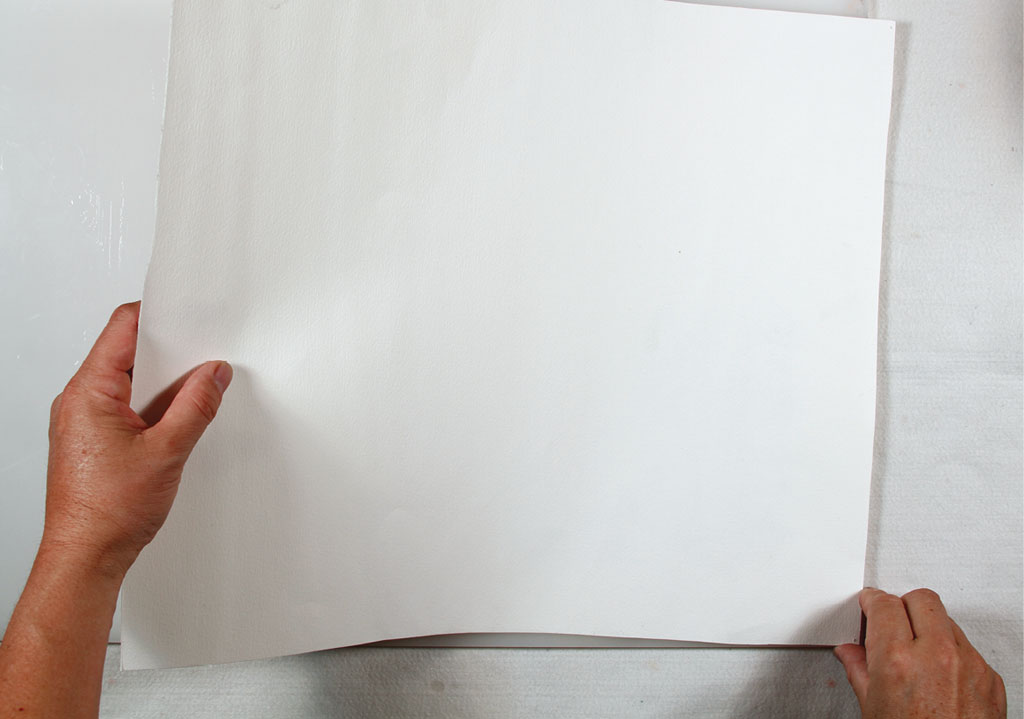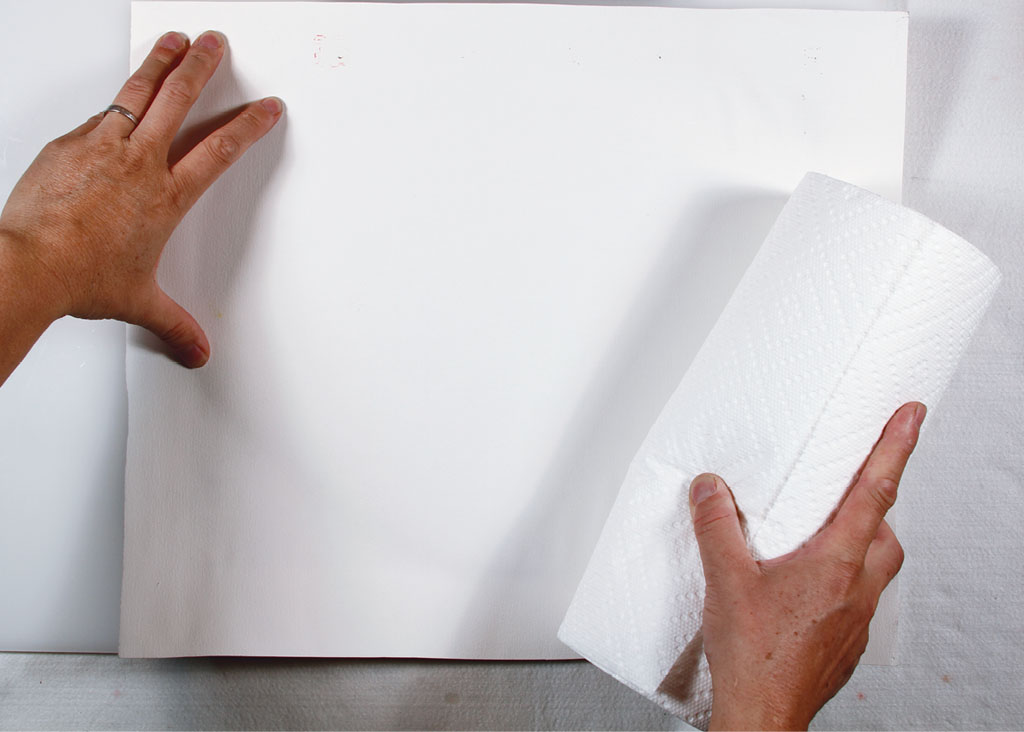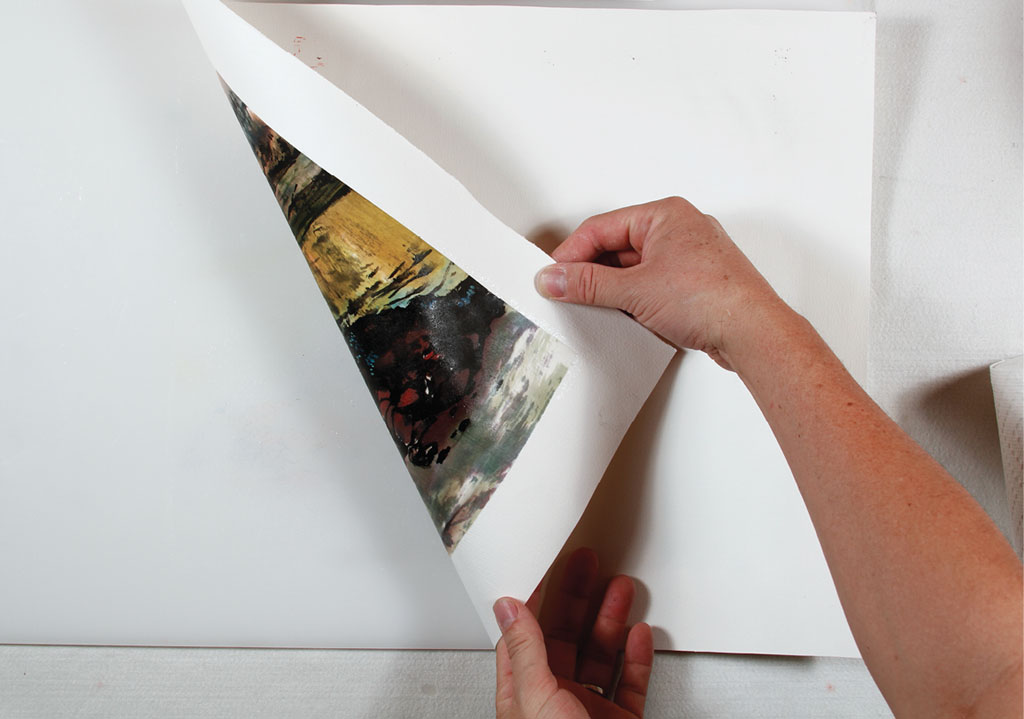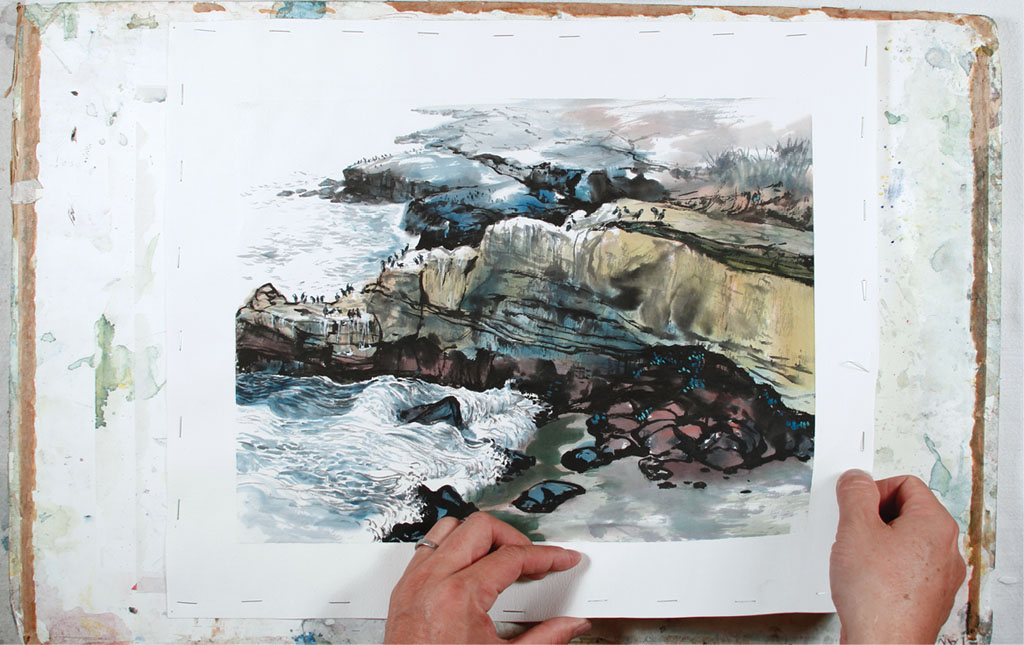
When ink and colors dry on Shuan paper, the paper wrinkles and warps. The pigments also sink into the fibers making the colors appear dull. To flatten the paper and make the colors pop, Chinese paintings need to be stretched. This is done by adhering another layer of Shuan paper or hot- or cold-pressed watercolor paper to the back of the original painting and allowing them to dry together.

• Methyl cellulose adhesive or clear wallpaper paste. Use one with a neutral pH so that it will not discolor or disintegrate over time.
• Flat, soft-haired brush. For small paintings a 3-inch (8cm) brush will work well, and up to a 6-inch (15cm) for larger paintings.
• Backing paper cut 2 inches (5cm) larger than your painting. Here I used 90-lb. (190gsm) watercolor paper, but Shuan paper, or hot- or cold-pressed watercolor paper, also works well.
• A clean, smooth and even surface for stretching such as a countertop or Plexiglas table. Its size should be larger than the backing paper.
• Hardboard for stapling down the backed painting to dry. I like Gator board because it is lightweight and easy to staple with a regular stapler. Smooth plywood would also work. Avoid flimsy boards such as foamcore that can warp easily.
• Spray bottle and paper towels.
• Cutting mat and craft knife.

Lay the watercolor paper on a Plexiglas surface, aligning it with the edges and corners of the glass. Flip your finished painting upside down and center it on the watercolor paper. Use one hand to hold the painting in place while you slowly pull out the watercolor paper.

Spray water on the painting until it is lightly wet, which will allow it to flatten. Continue spraying water to flatten it more, but don’t soak it. The paper will be ready after a slight wetting. Use your hands to carefully lift and pull the edges to flatten any warps. Be careful not to rip the paper.

Use a large soft-haired brush to apply wallpaper paste to the back of the painting. Start at the center and work out to the edges and corners. Apply paste until there are no air bubbles between the painting and the Plexiglas. For this small, 10 1⁄2” × 13 1⁄2” (27cm × 34cm) painting, I used 1 teaspoon of pure methyl cellulose and 4 ounces of cold water. After stirring with a plastic spoon, I let the mixture sit for 1 to 3 hours.

Attach the watercolor paper to the painting. Use one hand to carefully line up the watercolor paper to the corner of the Plexiglas. Slowly lay the watercolor paper down onto the painting while continuing to match the edges to the glass.

Use a paper towel roll to push the watercolor paper down onto the painting until you have a firm attachment.

Using your hands, slowly lift up both the watercolor paper and the painting together from one corner at a time. Sometimes you can lift on the first try; other times you will need to try all four corners.

Place the painting and backing paper face up on Gator board or another firm surface. Use a stapler to fasten the edge of the watercolor paper, placing about 1 1⁄2 inches (4cm) between each staple. If you are using a hard surface such as plywood, you will need to use a heavy-duty stapler.

Allow your painting to dry for 5 to 8 hours, depending on the humidity. Once dry, unfasten the painting and backing paper from the board. The painting should have no wrinkles or warps. If you want to make small touch-ups, do it before you unfasten the surfaces and allow the painting to dry again.

Trim the watercolor paper at about 1⁄3” (8mm) to 1⁄2” (13mm) away from the painting. Your Chinese painting is ready for matting and framing just like a regular watercolor.